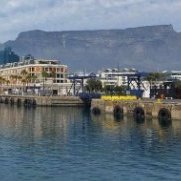Hurricane Jova weakens as it roars toward Mexico's Pacific coast
-
Recently Browsing 0 members
- No registered users viewing this page.
-
Topics
-
-
Popular Contributors
-
-
Latest posts...
-
158
Accident Brit Now Faces 10yrs in Jail After Pattaya Crash Death
Do not know about other borders but the one with malaysia has towns basically integrated with the other side and specially malayans hop in and off like nothing through not oficial channels..sp the youth like to party at the thai side obvious reasons.... And well the laos borders all you need is someone willing to take you to the oposite bank off the mekong ...is not It? If he is being helped so easy to escape .....then get back to europe might be an issue through air with no docs ... -
8,176
-
3
Cataract surgery recommendation?
The one I posted is on the first page and last posted on 3 days ago. Here's another older one. https://aseannow.com/topic/1343299-cataract-surgeon-innear-pattaya-recommended/ -
21
Analysis Paetongtarn’s Refusal to Step Down Seen as Key to Court Survival
Now its daddy's turn: BREAKING: The Criminal Court is scheduled to rule on the lèse-majesté case against former PM Thaksin Shinawatra tomorrow, August 22. A media gag order has been issued, prohibiting reporters from attending the hearing. @PravitR's take: If found guilty, although Thaksin could appeal, it will significantly undermine the power of the ruling Pheu Thai Party, which is perceived to be under Thaksin's guidance if not control. Also, not allowing reporters inside the courtroom further reminded the world that the royal defamation law is problematic. https://x.com/KhaosodEnglish/status/1958443876102148152 -
13
Gavin Newsom floats November special election for his anti-Trump redistricting push
Retaliate? 🤣 It's a red State which started it, and Trump and Vance have already been inciting them to do more! Actually, gerrymandering is a frequent Republican tactic. "Unsurprisingly, when one party has control over drawing district lines in a state, elected officials usually create districts to benefit their party. There are more Republican-led states like that than Democratic-led ones, according to the Brennan Center. Groups that seek to end gerrymandering usually recommend that states reduce the role that politicians play in drawing new districts. Eleven states do that by using commissions that are bipartisan or that include nonpoliticians. Most of those states are led by Democrats. Again, California has one and Texas does not." https://www.npr.org/2025/08/18/nx-s1-5495427/trump-redistricting-texas-congress-california https://www.brennancenter.org/our-work/research-reports/who-controlled-redistricting-every-state -
51
I was sexually assaulted on a plane
No wrong! He had a hand down her trousers! You seem to be just fine with that! I will leave it at this,people like you give me the creeps.
-
-
Popular in The Pub










Recommended Posts
Create an account or sign in to comment
You need to be a member in order to leave a comment
Create an account
Sign up for a new account in our community. It's easy!
Register a new accountSign in
Already have an account? Sign in here.
Sign In Now